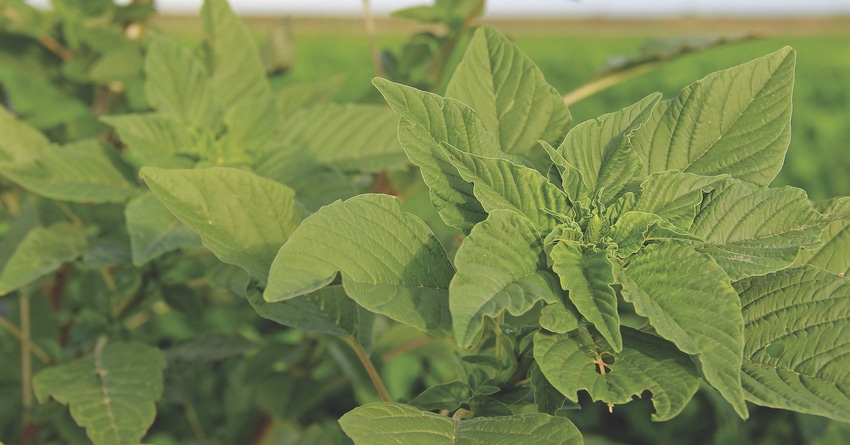
Producers growing XtendFlex cotton have often relied on sequential applications of glufosinate to clean up Palmer amaranth escapes from the initial dicamba application. With the availability of XtendFlex soybeans in 2021, follow-up applications of glufosinate will likely become more common. Now researchers with the University of Arkansas System Division of Agriculture say the timing between sequential applications could help maximize weed control.
“I think we’re past the point of single applications to achieve adequate control of Palmer amaranth during the growing season,” said Lawson Priess, a Ph.D. student in weed science under the direction of Dr. Jason Norsworthy. “We felt there was limited research on how to optimize sequential applications of dicamba and glufosinate and wanted to know if the timing of those applications could affect weed control.”
Priess’ research showed dicamba followed by glufosinate 14 days later was consistently the best option for sequential applications — performing better than dicamba or glufosinate only post-emergence programs and dicamba followed by glufosinate at different time intervals. It was also the only treatment in his study to achieve greater than 90% control on Palmer amaranth that were larger than four inches.
Priess shared his research on optimal timing for sequential applications during the Arkansas Crop Protection Virtual Conference on Dec. 2. His study evaluated applications of dicamba followed by glufosinate, as well as glufosinate followed by dicamba at time intervals ranging from six hours to 21 days. The herbicides were applied to native Palmer amaranth populations. Additionally, he evaluated sequential applications of dicamba alone and glufosinate alone at seven, 14 and 21 days.
Can you spray too early?
While the 14-day interval achieved the best weed control in Priess’ study, overall, he saw very good control in treatments where two herbicidal modes of action were used. However, Priess said he did observe a reduction in efficacy when dicamba and glufosinate were applied in six-hour to seven-day time intervals on large (greater than 4”) pigweed.
“We’ve found there’s a nearly 70% reduction in Palmer amaranth ground cover only 200 minutes after dicamba application,” Priess said. “That’s 70% less leaf surface area that glufosinate has to come in contact with and be absorbed into the plant. That’s why we think we see a reduction in the efficacy when dicamba is followed by glufosinate in close intervals.”
With the likely adoption of the XtendFlex technology on increased acres, Priess said he was hopeful producers will adopt the use of two effective sites of action to mitigate the probability of dicamba and glufosinate resistance developing.
“The use of two effective sites of action when dicamba is applied 14 days prior to glufosinate has been one of the best treatments for the XtendFlex technology,” Priess said.
About the Author(s)
You May Also Like






